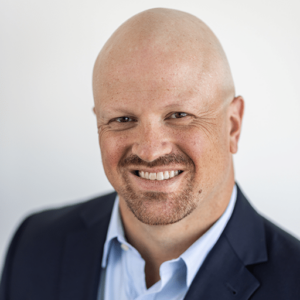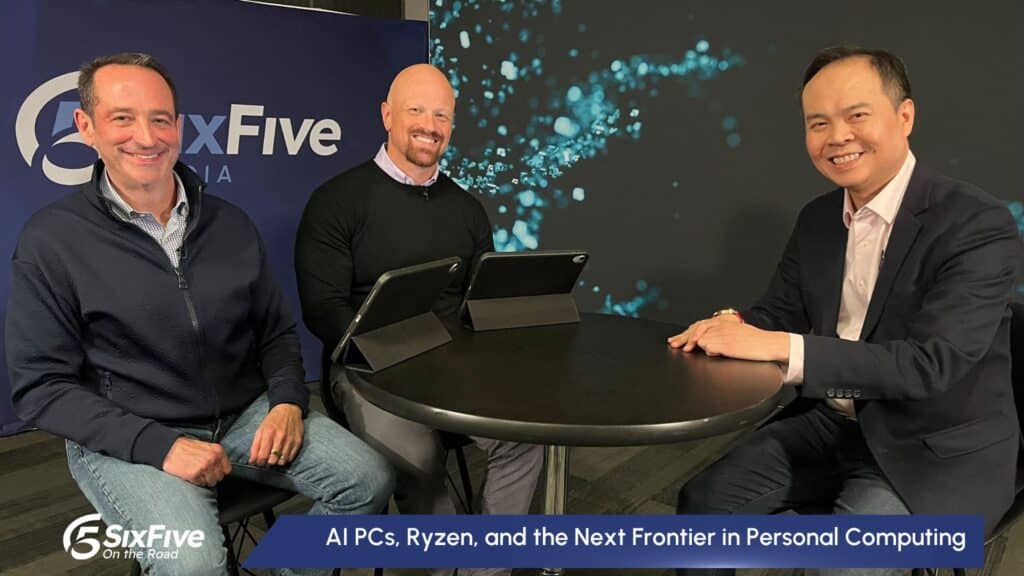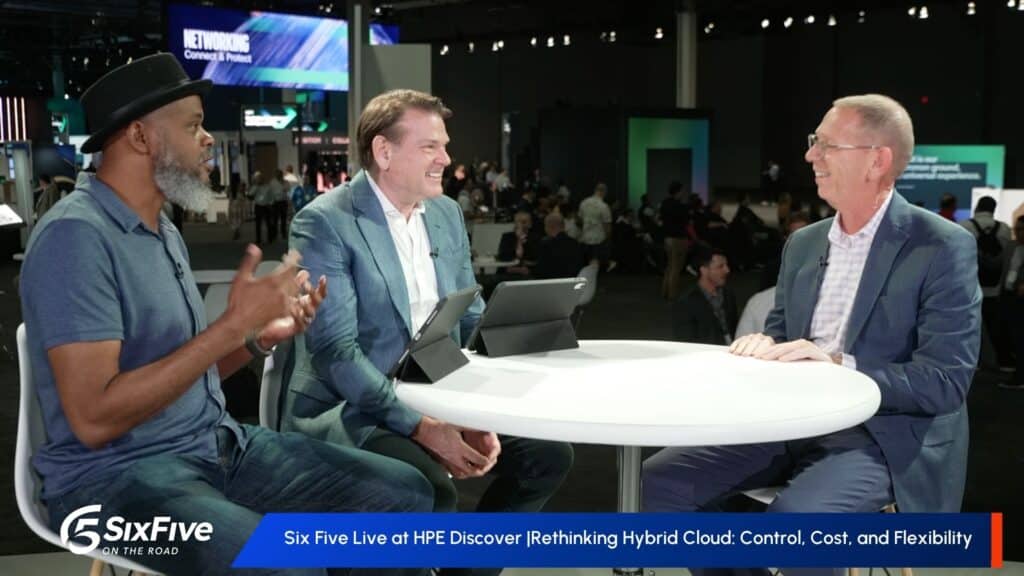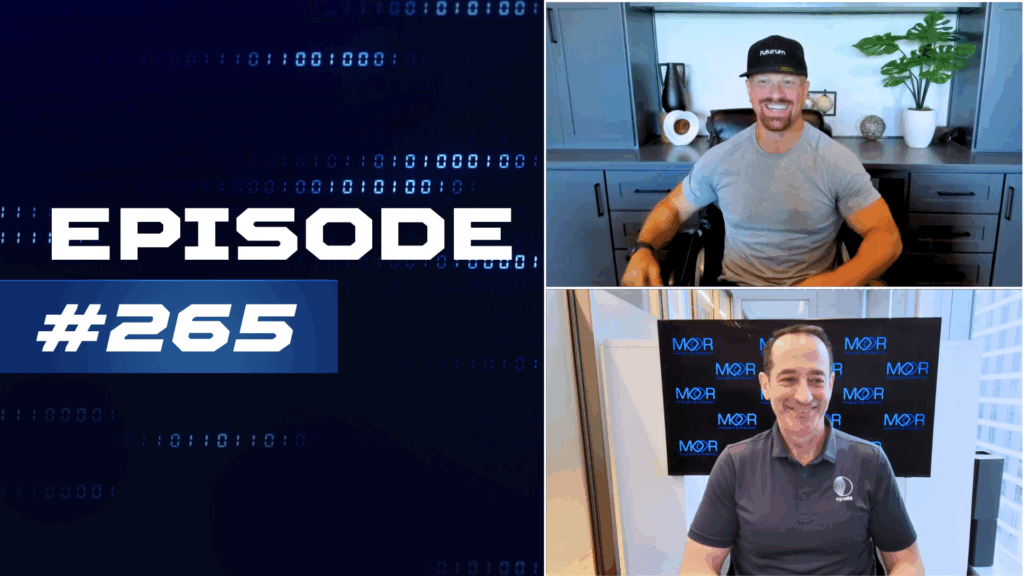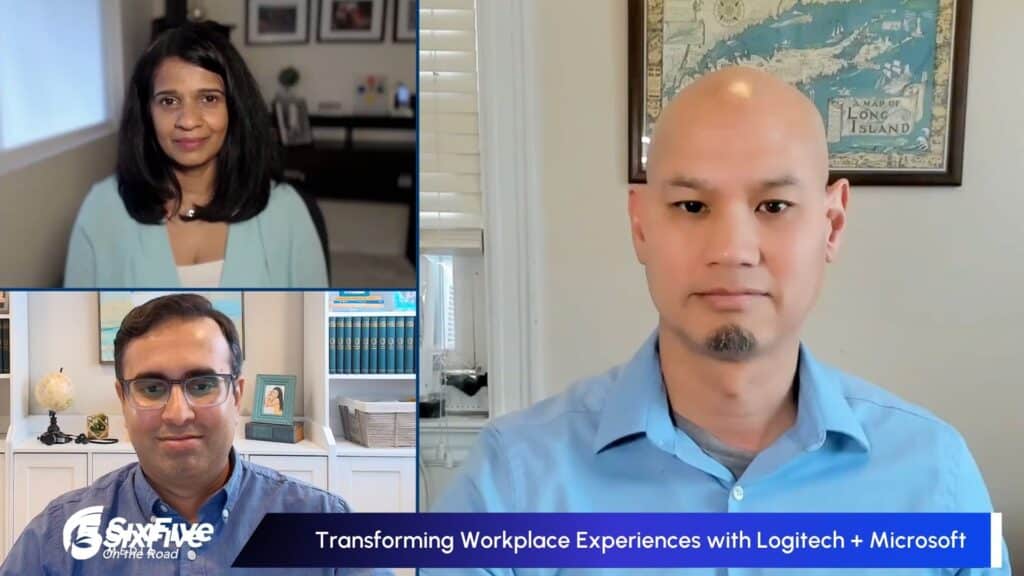On this episode of the Futurum Tech Webcast – Interview Series, host Daniel Newman welcomes HPE’s Bryan Thompson, GreenLake Product Management and Equinix’s Lisa Miller, SVP Platform Alliances for a conversation on how HPE GreenLake for Private Cloud Enterprise is helping businesses solve their multi-cloud and multi-workload challenges.
Their discussion covers:
- What challenges HPE’s customers face in their multi-cloud environments and with multi-workload performance needs
- How HPE and Equinix are helping customer address those challenges
- More on the expanded partnership between HPE and Equinix and the metro-areas where pre-deployed HPE GreenLake capacity will be available
- The benefits of HPE GreenLake for Private Cloud Enterprise in helping to increase efficiency, security, sustainability while optimizing cost and performance
Watch the video below, and be sure to subscribe to our YouTube channel, so you never miss an episode.
Listen to the audio here:
Or grab the audio on your streaming platform of choice here:
Disclaimer: The Futurum Tech Webcast is for information and entertainment purposes only. Over the course of this webcast, we may talk about companies that are publicly traded, and we may even reference that fact and their equity share price, but please do not take anything that we say as a recommendation about what you should do with your investment dollars. We are not investment advisors, and we ask that you do not treat us as such.
Transcript:
Daniel Newman: Hey everyone. Welcome back to the Futurum Tech Podcast. I’m your host, Daniel Newman, CEO of The Futurum Group. Excited for another Futurum Tech Podcast interview series. I’m going to be talking today to Bryan Thompson of HPE and Lisa Miller of Equinix. Great conversation ahead.
There’s so much going on in tech space. Enterprises are up against modernization. We hear the big AI word all the time, but we also have much bigger and other complexities in the world when you’re trying to get your data right, when you’re trying to get all your apps and your enterprise right. We have to figure out where do all those workloads go, how do we build out a mix of public, hybrid, private that meets our business’s needs. And that’s what our guests are going to be here to talk about today. So without further ado, Bryan, Lisa, welcome to The Futurum Tech podcast. How are you both doing today?
Lisa Miller: Awesome. Thanks so much for having us, Daniel.
Bryan Thompson: Yeah, yeah, definitely. Thank you.
Daniel Newman: Bryan. You’re an alumnus, so I’m going to make you wait and go second here, but because we do have a new guest here on the show, Lisa Miller, give us the quick background. Talk a little bit about what you’re doing as the senior vice president of Platform Alliances at Equinix.
Lisa Miller: Absolutely. My responsibility includes our alliance partners, which are our four clouds. It also includes our top tech. Plus, I also have responsibility for Global Channel. So a lot of things going on.
Daniel Newman: Bryan?
Bryan Thompson: Yeah, so great to be back and talking to you. So I lead product management for HPE GreenLake Cloud Services. So we think about the GreenLake portfolio of as a service offerings. My team is very much focused on things like our private cloud portfolio and delivering cloud experiences for customers where they need it on-prem in their data centers and co-location at their edge locations.
Daniel Newman: Good to have you back. Appreciate you making the time. So Lisa, let’s start off talking to you a little bit about customers. We do this for the customers. Whether that’s the build out of the new services from GreenLake or whether that’s the growth of the global footprint of your company, Lisa, you’re doing it with them in mind. You heard me mention the enterprise challenges. You heard me mention multi-cloud, multi workload. What are you hearing from customers about these things and how are they dealing with all this complexity?
Lisa Miller: I think that if you’re an enterprise customer, the challenge is there are so many choices and yet sometimes trying to find the right choice for the right workload, the right performance, the, “How much should I keep on-prem? How much should go to the cloud?” So there’s a lot of decisions that they’re facing today in trying to get that right price performance balance to know exactly where to put everything.
Daniel Newman: Yeah, it’s a great point. And I like that you did point out where do the workloads go. It’s funny because, well, some point, the cloud’s almost 20 years old now. I mean…
Lisa Miller: Crazy, isn’t it?
Daniel Newman: Yes, it’s an adult, a young one. So maybe it’s decision making isn’t perfect, but it’s an adult. There was that period of time where we’re like, “Everything’s going to the cloud.” And I think we really quickly had a mature moment and we’re like, “Well, wait a minute. That’s not happening.”
And even as we see this pendulum swing, it’s never, quote me on this, this will be the hill I’ll die on as an analyst, it will never be 100%. It will never… I’ll take that risk. And if this happens someday, by that point, I hopefully will have retired. So Bryan, what about your end? I mean, we’ve chatted in the past. I mean, what are your customers saying about multi-cloud, multi workload and the vast challenges of running an enterprise architecture?
Bryan Thompson: Yeah, I think that’s key. And I think even as Lisa pointed out, it’s not a question of are you hybrid cloud. Every enterprise is hybrid cloud. It really comes down to that workload placement, what are the reasons that I drive these different things, how do I optimally use these resources, the right workload in the right place. One of the things that we see is recognizing that you still have the on-prem aspects of it though, but they want the cloud experience. So I start to provide the same type of self-service and agility. So that’s where we see a lot of that growth and pull because they are going to be running across multiple different surface areas.
Daniel Newman: But Bryan, isn’t it also about kind of speed to value? I mean, I’ve said the two letter word, AI. It’s not actually a word, but I don’t think we need to actually tell anybody anymore what it stands for. But this has to be probably the fastest proliferation I’ve seen of a technology where whether you’re an enterprise architect or you’re a board member of a company, this is the main thing you’re thinking about.
And in order for companies to quickly act on data when 75, 80% of enterprise data is still on-prem, it’s not moving everything to the cloud. So I’m guessing they’re coming to you and saying, “Look, we’ve got to be able to start enacting on this data right now, but we have to be able to do it in a way that allows us to gradually continue to manage where data lives and start implementing and applying this right away.”
Bryan Thompson: Yeah, I think it’s even that awoken moment that in the last four months, if every CIO is not being asked, “What’s our AI strategy?” and the panic that “I have people taking my internal sensitive data and pushing that to public resources,” that’s terrifying. So they need to figure out like, “What is my answer to that? How am I providing this where I can start to get insights and leverage my data without pushing it in places that I don’t have control over it?” So you’re exactly right. Time to value, speed, to how do I deliver these services is pressing on everybody’s mind.
Daniel Newman: Yeah, I would say that’s not going to stop anytime soon. Lisa, I want to talk to you a little bit about sustainability. At the highest level, every company on the planet is not only thinking about AI, but they’re also thinking about how do we implement all this technology, but at the same time, A, deliver to our shareholders and our stakeholders a narrative that says, “Hey, we care about the planet,” but you’re also kind of in this conundrum because you’re in the industry that’s literally using 1% of the world’s energy. And arguably with AI, that’s going to grow to two. How are you thinking about sustainability in terms of solving customer problems?
Lisa Miller: Well, sustainability is absolutely huge. You cannot be a data center today that that is not a critical factor. We take it very serious. We’re at a 96% renewable energy rating. We’ve been over 90 for the past five years. And a significant amount of our investment every year goes into ensuring that our sustainability rating just keeps getting better. And of course, as you said, everyone is thinking about that. So we need to make certain in every area of the world and every time we’re adding a data center that we are thinking sustainability first and how we’re going to ensure that we can get to the highest numbers possible.
Daniel Newman: So that is a bold ambition, but it is one that a company like Equinix has the opportunity to be a leader. Meaning when you’re in the industry, it’s kind of like people in the oil and gas industry want to look at oil and gas as the negatives, but a lot of those companies are making massive investments to move to alternative energy. In the world of sustainability, we may see our energy consumption growing rapidly because of technology and the adoption of data, but you’re also in the best position to fix it by looking at how you build these data centers out, how you grow your footprint responsibly, how you invest in the most efficient servers, how you invest in the most efficient architectures.
Talk a little bit about how Equinix broadly is prepared to help customers with these sustainability challenges. And then take it one step further and just talk about the company’s overall ability to help companies deal with these technological challenges.
Lisa Miller: Well, there are tremendous amount of things that we’re looking at, but just think about not only the sustainability of the facilities themselves, but we are working with a lot of OEM providers today to say, “How can we create programs for when your equipment is at end of life? And what can we do to be sustainably thinking about all of those things and how you remove some of this equipment?”
So not only are we always thinking about the facilities, which I mean we’ve spent $45 million just this year in sustainability efforts and efficiency efforts, which we are continually looking at, but we’re trying to look at the whole process that an enterprise faces. It’s one thing about when you go into a data center, but what are all the lifecycle challenges that happen while you are in a data center? Because think today how fast equipment lifecycle changes.
Somebody was telling me the other day, “Oh, whoa, wait a minute. AI equipment, that’s not going to have the lifecycle of our equipment that we’re using today.” And I went, “Are you kidding? Another variable we have to think about that the lifecycle is also going to be different?”
So we have to think with those type of things in mind as people are going, “Okay, now we’re going to be leaning even more into AI.” We as a great data center partner, have to think of everything our customers are facing for every single thing they put in that data center to see how we can be a good partner and be helping them through those challenges.
Bryan Thompson: Daniel, if I could add to that too, I think the, how this starts to work together, this is a key thought and where we work with customers thinking about sustainability and really that kind of 360 life cycle, how do we help uplevel? Yes, next generation servers are, you can argue, drawing more power in certain cases, but you look at the density and the workload that performed, you can actually reduce the overall footprint significantly.
And then we think about the same thing where HPE financial services can step in with that buyback recycling experience for the legacy equipment. So you’re taking that out, you’re finding reuse, recycling for that. So again, it’s not ending in the landfill. We’re actually able to leverage that, but you help organizations overall reduce that overall consumption.
We’re working in partnership obviously with Equinix delivering in next generation data centers, more fuel efficient, if you will, and in many cases powered by renewable energy. So there’s a lot of that compelling reasons on how do I move and take advantage of these next gen because I can recycle out and move off of my legacy footprints, which aren’t going to be nearly as efficient.
Daniel Newman: Yeah, we’ve worked closely-
Lisa Miller: You know Bryan-
Daniel Newman: Oh, go ahead. You go ahead, Lisa.
Lisa Miller: No, I was just going to say, Daniel, what I think is really important and why you’re seeing people lean towards as a service offers is as we’ve worked with HPE for private cloud enterprise, which is an as a service, you are now taking some of that burden off of the enterprise because they’re not having to deal with the equipment anymore. They’re not having to go, “Wait a minute, what’s the life cycle of this?”
And life cycles never line up because all of a sudden new revisions, new equipment, get put into a data center, and then you’ve got some other pieces of equipment that they’re in the middle of a life cycle. By looking at solutions that are as a service like the private cloud enterprise, you don’t have to think about that.
And so taking that burden off, making that ease of use, just the time to market for customers, especially when they’re going in or trying to launch a new market around the globe, it is critical to be looking at those services for a CIO to just keep saying, “Let me find ways to take some of this burden off of me as an enterprise.”
Daniel Newman: Yeah, absolutely. And I’ve been, Bryan, looking at the whole circular economy and how HPE has been thinking about that for a long time, and I’ve really admired the fact that there’s so much technological waste in the system that could be reapplied and redeployed in every enterprise.
So whether it’s literally design thinking to, “Hey, this is where we’re going to put our data centers in relationship to natural resources, sunlight and water and everything else,” to just getting to the point of, “Hey, let’s not let this perfectly good laptop end up in a landfill.” I mean, there are so many ways that we can make a difference and be practically sustainable. I’ve been really struggling with that because I think it becomes problematic because the line between greenwashing and being able to do measurably meaningful sustainability is so small. And if you cross the line, what ends up happening is the effort gets washed out instead of being properly applauded for the efforts that companies are making to really drive and make a difference here.
So Bryan, let’s get back to tech though for a minute. Not that sustainability isn’t tech. You can have apps, there’s analytics, there’s all kinds of measurement tools, and of course all those sustainable energies are full of patents, engineers, PhDs and smart people that have made that happen. But the stuff we focus on, the cloud, talk a little bit about how HPE is enabling the customers right now. How are you helping them innovate along the lines of using private cloud in a world where you know it’s never going to be the only thing, but in many cases it’s got to play a significant role in their equation.
Bryan Thompson: Yeah. For us, private cloud, and really that focus behind HPE now delivering a HPE GreenLake private cloud portfolio, so it spans private cloud enterprise, a fully managed cloud solution. So it’s really how do I give you those same cloud primitives that you’d be consuming from one of the hyperscalers, but in a, where I need it to be, in my private cloud, behind my four walls, in co-location in Edge.
But giving that same self-service experience, the intent being how do you help enterprises remove that operational complexity to architect and operate these technologies and allow them to focus on that application tier, innovation using new technologies, building new apps services that serve their business. So that’s been the key value proposition that really focus on delivering that cloud experience, but where they need it to be.
Daniel Newman: Yeah. And it’s been a very successful journey. Over the past few quarters, I’ve had a number of conversations with the big boss, with Antonio. We’ve spent a lot of time focusing on how the company told a story and has executed its story. And that’s been very evident in everything from the, “I’m an analyst, so I love a good crawl chart.” And looking at the evolution of the services, your competitors have all come out and said, “We’re doing this on-prem consumption cloud thing.” I won’t take anything away from the efforts because the reason they’re all there is because they have to be.
But what I will say is the diversity of the services that are coming from most of these providers are still pretty limited. It’s taken a long time to get beyond some very, very standard compute or storage offerings. And you’ve really been thinking about AI data services, you’ve been thinking about edge services, and that’s been an impressive evolution. So congratulations on all that.
But I also got to say I’ve enjoyed speaking to each of you here, but generally speaking, when I do a show like this, and I have two folks from different companies on with me together, they’re usually not only doing things in isolation, but they are doing some things together. So let’s talk about that for a minute. Over the last several months, there’s been a number of expanded partnerships announced between HPE and Equinix, and this comes down to having some pre deployed HPE solutions that can run in Equinix’s data centers. Talk a little bit about what you guys are doing together.
Bryan Thompson: Yeah, Lisa, you want to start, or I can give the HPE.
Lisa Miller: Why don’t you give the HPE and then I’ll talk about our long relationship we’ve had.
Bryan Thompson: So we talked a little bit about that value proposition, what we’re seeing from customers seeking a private cloud experience. But if you think about cloud experience, part of that cloud experience is, “How fast can I start to get value from this?” So while we’d love to work with customers, “Let’s architect and deliver a cloud experience wherever they need it to be,” the experience where I can have pre-staged environments ready to spin up for a customer, single tenant in a matter of days as opposed to what might’ve been weeks or months to dedicate space and bring up networking and all the things that kind of go into that.
So through this partnership, this has allowed us to pre-stage, as you said, ready stacks for private cloud, pre deployed in cage space that Equinix has built out that power envelope dedicated to these solutions. So we can literally light up customers in these key metro areas literally in a matter of days. That true cloud experience, yet dedicated to them single tenant private cloud experience now leveraging the power of the Equinix IBXs in their data center reach and networking connectivity.
Lisa Miller: And the beauty of that, Daniel, is for over two years, we’ve been working in a cell width motion with HPE. So as they go out and talk to their customers about GreenLake, whether it’s going to be on-prem or it’s going to be in a data center at Equinix, we’ve been jointly going to very large enterprises and working together to find the best home for the GreenLake solution.
What’s great about the as a service is one of the challenges we were hearing from customers is, “I need to deploy faster.” Many times we’re looking at four to six months to deploy a solution. That doesn’t work for everyone.
All of us are trying to be as competitive as possible, which means fast time to market, got to turn things up quickly. And the relationship we have now with private cloud enterprise at Equinix, that’s to me going to be a game changer in the industry. And I feel that why we as partners were able to bring this to market so fast was because you had Antonio going from the CEO on down from our CEO, Charles Myeers, on down.
Both teams were extremely committed to bring this to market really quickly and make certain that we had key locations around the globe as these pre-provisioned sites. So we’re really excited to start seeing the success coming from private cloud enterprise and private cloud business edition.
Daniel Newman: So bonus question as we sort of wrap this conversation up, I like to look out into the future. So we’ve talked about a few different things. It sounds like you’re definitely successfully enabling your customers to engage in consumption, whether on-prem or enabling the connectivity to the public cloud. And you’re also very focused on helping companies meet complex sustainability goals that they’re setting out both internally and of course for their shareholders and stakeholders.
How do you see a partnership like this evolving? Is there, for instance, with the advent of generative AI, and it’s the trend right now, you’re seeing new data center architectures, very different types of compute? You’re seeing new applications? You’re seeing faster automations? And it’s not just writing our haikus in our entrance exam, it’s also writing code. I mean, there’s so many things going on for us. How do you see this partnership evolving over the next few years to add more value to your customers? Bryan?
Bryan Thompson: Yeah, from our take, I think we think about that private cloud portfolio is that foundational substrate, right? It gives me all those core things. Even I think about AI workloads, how do I do container orchestration? But now how do I think about optimized building blocks of infrastructure to run those HPC processors, right? Or more GPU access too. How do I deliver those as a service that I can start to consume? How do we leverage the networking and connectivity and cloud adjacency that comes from this partnership and having those things deployed where I need them to be in a private context so I can run these types of critical workloads now on top of a private cloud experience?
I think that’s where there’s a ton of opportunity. We think about that spectrum from model training through inferencing and everything PFT tuning in between. There’s a ton of opportunity to leverage these building blocks now with that cloud experience, quickly provisioned available to me, self-service. Just a ton of opportunity together.
Lisa Miller: And then when you-
Daniel Newman: And Lisa?
Lisa Miller: Yeah, absolutely. When you look at all of those building blocks and then you look today, we’re in almost 250 data centers around the globe, that gives the ability for tremendous growth for Bryan and his team to be able to deploy this throughout many of our facilities across all the continents to provide the best experience to customers.
What’s great about placing your workloads in all these different locations is we can’t be all things to all people nor can HPE, but we are trying to create flexibility so that whether it’s on-prem, whether it’s private cloud, public cloud, we are providing the options that are a safe space for companies to go and place their workloads in an environment that is a good sustainability option as well. And so I think this partnership has a very long runway.
Daniel Newman: That’s terrific. Bryan, Lisa, I want to thank you both so much for spending a little time with me here on The Futurum Tech Podcast. What you’re working on really is the work that enterprise IT leaders and business leaders are very focused on and will need to continue to focus on for the years to come. The trends around AI, the trends around data, the trends around cloud are not going to slow down.
And in fact, as our businesses become more dependent on technology to run, it’s going to make a great and very ideal environment to grow both of your businesses on a continued basis. So I hope to have you back, we’ll have to pick this conversation up in the next few months, year, hear how you’re doing, but for now, I’m wishing both of you great luck and great success and have a really good day.
Daniel Newman: Thank you.
Bryan Thompson: Thank you. Really appreciate it.
Daniel Newman: All right, everybody, hit that subscribe button. I appreciate you tuning into all the episodes of the Futurum Tech Podcast. We have so many great shows, great guests, because well, that’s what we do here. Technology is moving fast. And if you want to keep up, you should join us here each and every time on the Futurum Tech Podcast. But for now I got to say goodbye. See y’all later.
Author Information
Daniel is the CEO of The Futurum Group. Living his life at the intersection of people and technology, Daniel works with the world’s largest technology brands exploring Digital Transformation and how it is influencing the enterprise.
From the leading edge of AI to global technology policy, Daniel makes the connections between business, people and tech that are required for companies to benefit most from their technology investments. Daniel is a top 5 globally ranked industry analyst and his ideas are regularly cited or shared in television appearances by CNBC, Bloomberg, Wall Street Journal and hundreds of other sites around the world.
A 7x Best-Selling Author including his most recent book “Human/Machine.” Daniel is also a Forbes and MarketWatch (Dow Jones) contributor.
An MBA and Former Graduate Adjunct Faculty, Daniel is an Austin Texas transplant after 40 years in Chicago. His speaking takes him around the world each year as he shares his vision of the role technology will play in our future.






